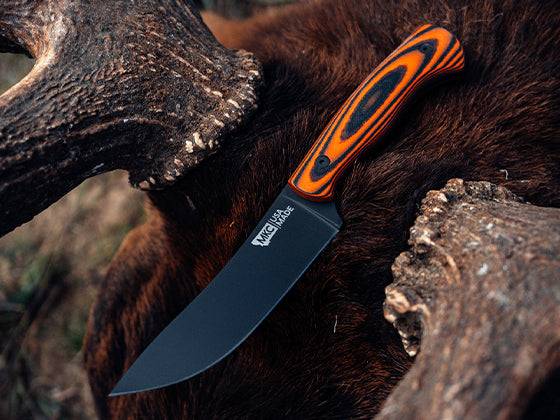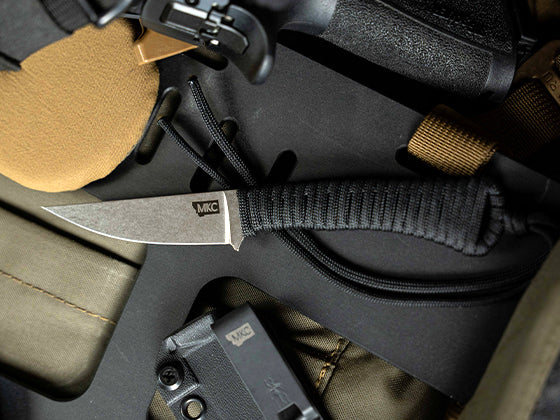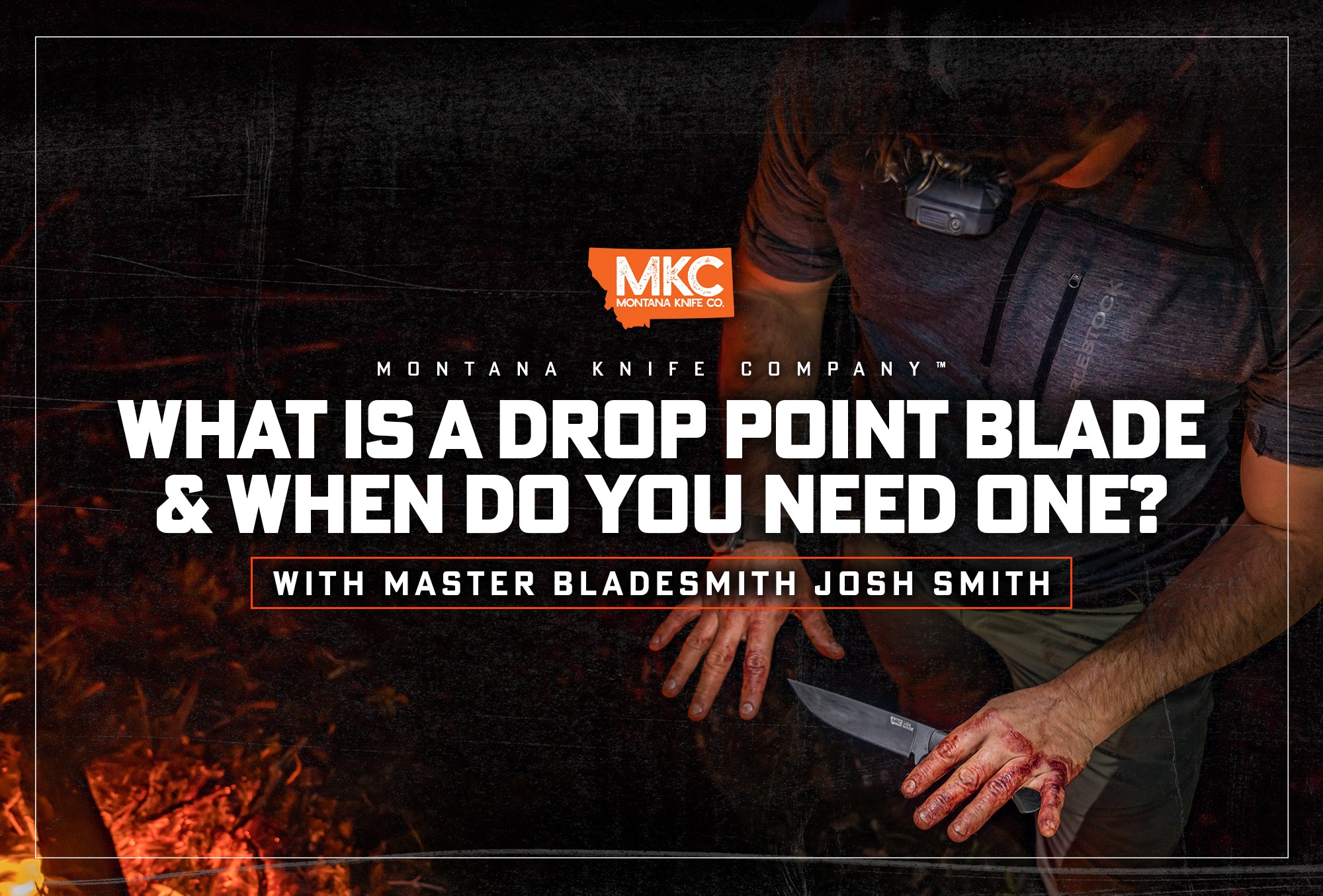Since starting, MKC has sold knives to customers in all 50 states.
While our knives are certainly legal to own in every state, the laws on carrying a knife differ.
State knife laws can be difficult to decipher, and an honest misinterpretation can land you in legal trouble. That’s why it’s important to fully understand the laws on carrying a knife in your state, or any state you’re traveling to.
Below, we detail restrictions on blade length, overall knife length, and legal concealed carry length. Just to be clear, this isn’t legal advice — we aren’t lawyers — and it’s by no means a comprehensive guide. But if you want to research knife laws by state, this is a great place to start.

State Knife Laws
Blade Length Restrictions
The length of your blade plays a role in determining whether your knife is legal to carry according to state knife laws.
In most states, there are no specific restrictions on blade length in general. However, many states have restrictions on the maximum blade length you can legally carry in certain public locations.
California, for example, prohibits blades over 4 inches long in most public buildings, and blades over 2.5 inches long on school campuses. Los Angeles has its own, more restrictive laws, setting the maximum open carry blade length for the entire city at 3 inches.
State knife laws may not restrict blade length at all, but in many states you still have to pay attention to prohibitions in specific cities. Colorado, for example, doesn’t restrict the blade length of open carry knives (though it restricts concealed carry to 3.5 inches). The city of Denver, however, restricts all blades to 3.5 inches, except in the case of hunting and fishing knives.
That’s one of the reasons we fitted the MKC Mini-Speedgoat with a three-inch blade — so knife owners can carry it openly in most places.
Overall Length Restrictions
Some state knife laws include restrictions not on the blade length but on the overall length of a knife that can be carried.
For example, Texas state knife laws now allow any length knife to be carried openly or concealed in general, but still limit overall knife length to 5.5 inches in certain locations (schools, polling places, sporting events, bars, amusement parks, etc.).
Different states and cities have widely varying restrictions on blade length AND overall knife length. Be sure to consider both factors when determining the legality of carrying your knife in a new place.
Legal Concealed Carry Length
Not surprisingly, the legal concealed carry length for knives varies from state to state, too. Keep in mind, too, that some states with few knife restrictions may still have limitations on the location of carry and the age of the carrier.
Arkansas, for example, has no length restrictions for open or concealed carry knives at the state level, though there are some age and location restrictions. Additionally, some cities in Arkansas, like Eureka Springs and Fort Smith, have stricter laws than those of the state.
Arizona has no specific length restrictions for open or concealed carry knives, and they also have a statewide preemption that prevents local governments from imposing more restrictive prohibitions.
Georgia also has a statewide preemption, meaning across the state you can open or concealed carry knives with blades under 12 inches in length. These kinds of preemptions really help bring clarity to a state’s knife laws.
Other states, like Michigan, don’t allow concealed carry for any length knife unless it’s a hunting knife. Some states, like New York, seem to allow concealed carry, but the vague language in their statutes makes the safety of actually doing so unclear. And New York City is perhaps the most difficult place in the U.S. to carry a concealed knife of any kind without fear of legal trouble.
Finally, remember that certain types of knives are illegal to carry in certain states, regardless of their length.
Types of Knives
Even if the length of your blade and the overall length of your knife fall within the limits of a state’s knife laws, it could still be illegal simply because of the type of knife it is.
Here in Montana, residents can carry any type of knife, including a switchblade. But in states with more restrictive knife laws, switchblades are illegal regardless of the length of the blade. In Washington, for example, it’s illegal to own a switchblade and to carry a dirk or dagger concealed.
Every state is different, and many of those differences are nuanced, so it’s important to check local statutes, especially before traveling.

State Laws on Carrying a Knife: Final Thoughts
Understanding knife laws by state is the only way to ensure you’re carrying your blades legally and safely. This is true whether you’re a knife enthusiast, a hunter, or someone who depends on knives every day.
We strongly recommend you research the specific knife laws in your state or any state you’re traveling to, paying special attention to the above four categories. Remember that knife laws can vary not only by state, but also within states from one city to the next in states without a statewide preemption.
The internet is full of resources where you can investigate knife laws by state. Local websites, especially from knife groups, advocacy organizations, or legal offices that specialize in related areas (like those linked in this post) can be excellent places to look.
Because many statutes and ordinances have changed in recent years, look for the most recent information possible and sources that really understand (and cite) the underlying legal code. Even the measurements we mention in this post are subject to change, so keep an eye on fluctuating laws and be sure to read them carefully.
A little bit of research will be worth it to stay out of legal trouble and ensure you have access to the knife you need when you need it!
by Josh Smith, Master Bladesmith and Founder of Montana Knife Company







































